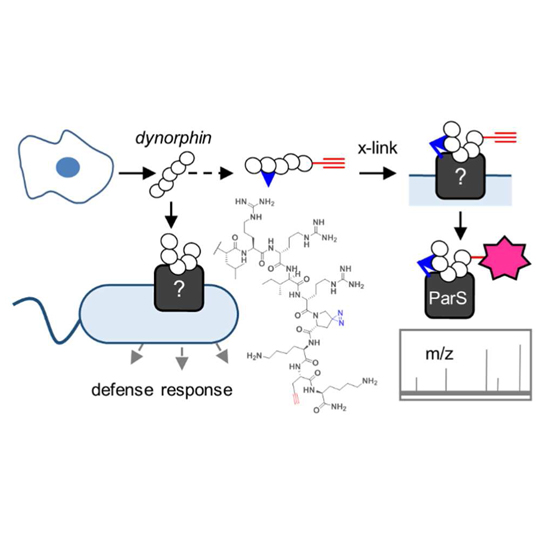Chemical Probes Unravel an Antimicrobial Defense Response Triggered by Binding of the Human Opioid Dynorphin to a Bacterial Sensor Kinase
28-Mar-2017
J. Am. Chem. Soc., 2017, 139 (17), pp 6152–6159, DOI: 10.1021/jacs.7b01072
J. Am. Chem. Soc., online article
Host–microbe communication via small molecule signals is important for both symbiotic and pathogenic relationships, but is often poorly understood at the molecular level. Under conditions of host stress, levels of the human opioid peptide dynorphin are elevated, triggering virulence in the opportunistic pathogenic bacterium Pseudomonas aeruginosa via an unknown pathway. Here we apply a multilayered chemical biology strategy to unravel the mode of action of this putative interkingdom signal. We designed and applied dynorphin-inspired photoaffinity probes to reveal the protein targets of the peptide in live bacteria via chemical proteomics. ParS, a largely uncharacterized membrane sensor of a two-component system, was identified as the most promising hit. Subsequent full proteome studies revealed that dynorphin(1–13) induces an antimicrobial peptide-like response in Pseudomonas, with specific upregulation of membrane defense mechanisms. No such response was observed in a parS mutant, which was more susceptible to dynorphin-induced toxicity. Thus, P. aeruginosa exploits the ParS sensing machinery to defend itself against the host in response to dynorphin as a signal. This study highlights interkingdom communication as a potential essential strategy not only for induction of P. aeruginosa virulence but also for maintaining viability in the hostile environment of the host.











